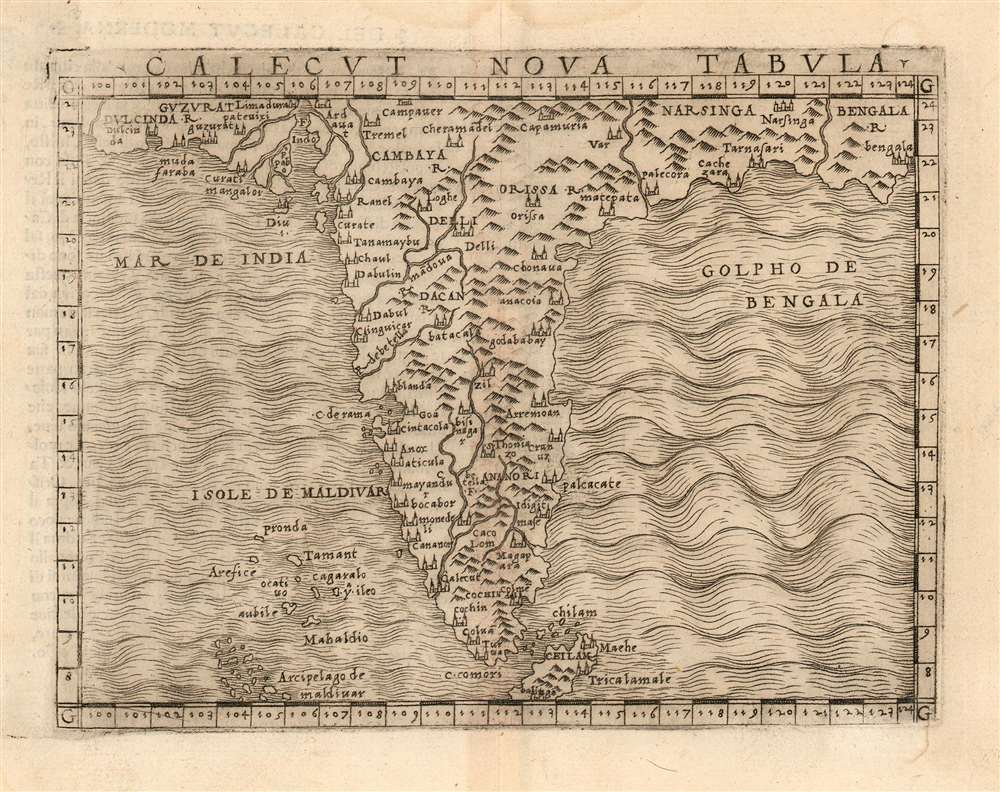This item has been sold, but you can get on the Waitlist to be notified if another example becomes available, or purchase a digital scan.
1548 Gastaldi Map of the Indian Peninsula
India-gastaldi-1548
Title
1548 (undated) 5.15 x 6.75 in (13.081 x 17.145 cm) 1 : 16000000
Description
Publication History and Census
The map was printed in Venice for Gastaldi's La Geografia, his modernized Ptolemy, which was published in a sole 1548 edition. It appears separately in only the British Library, the Bayerische Staatsbibliothek, and the University of Toronto. The book is well represented in institutional collections.Cartographer
Giacomo Gastaldi (c. 1500 - October, 1566) was an Italian astronomer, cartographer, and engineer active in the second half of the 16th century. Gastaldi (sometimes referred to as Jacopo or Iacobo) began his career as an engineer, serving the Venetian Republic in that capacity until the fourth decade of the sixteenth century. During this time he traveled extensively, building a large library relating to voyages and exploration. From about 1544 he turned his attention to mapmaking, working extensively with Gextantiovanni Battista Ramusio, Nicolo Bascarini, and Giovanbattista Pedrezano, as well as taking private commissions for, among others, Venice's Council of Ten. He is credited with the fresco maps of Asia and Africa still extant in the map room of the Doge's Palace. Gastaldi was also one of the first cartographers to embrace copper plate over woodblock engraving, marking an important development in the history of cartography. His 1548 edition of Ptolemy's Geographia was the first to be printed in a vernacular; it was the first to be printed in copperplate. As with his Swiss/German contemporary Münster, Gastaldi's work contained many maps depicting newly discovered regions for the first time, including the first map to focus on the East Coast of North America, and the first modern map of the Indian Peninsula. His works provided the source for the vast majority of the Venetian and Roman map publishers of the 1560s and 70s, and would continue to provide an outsize influence on the early maps of Ortelius, De Jode, and Mercator. More by this mapmaker...

